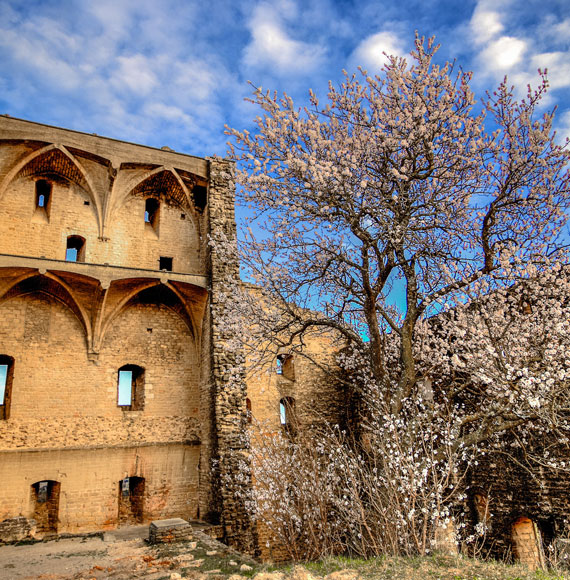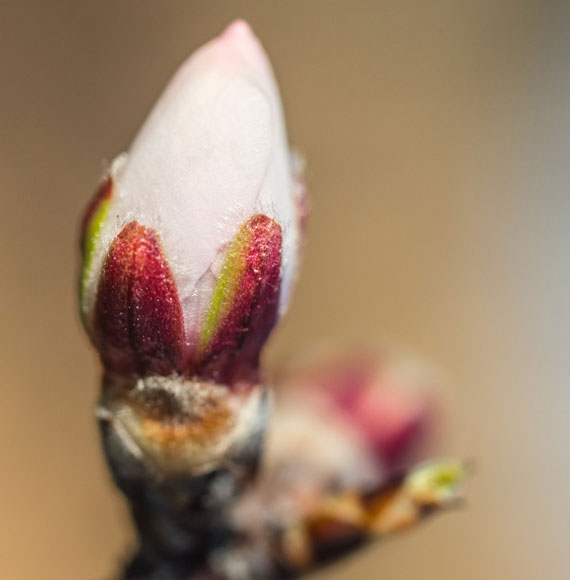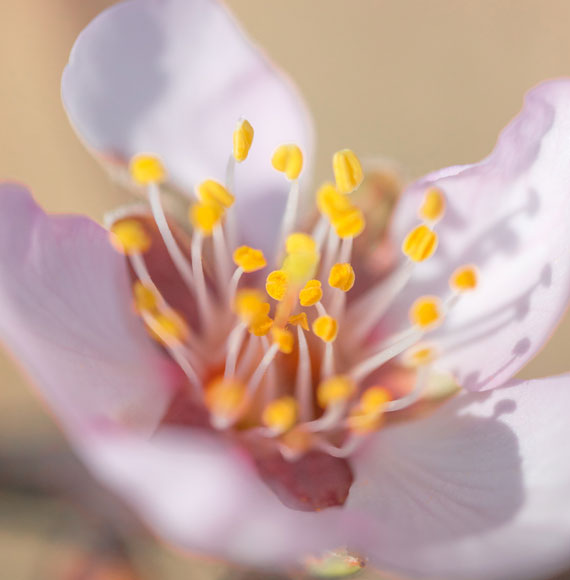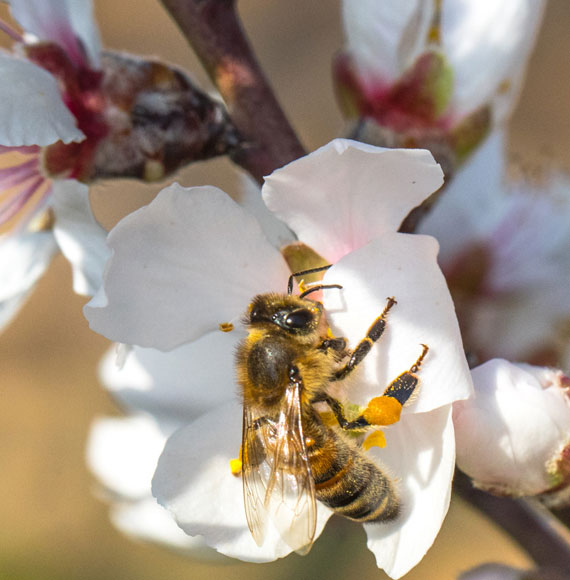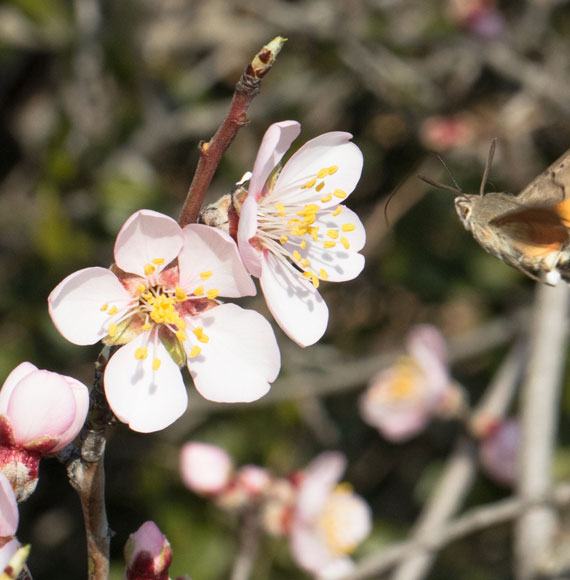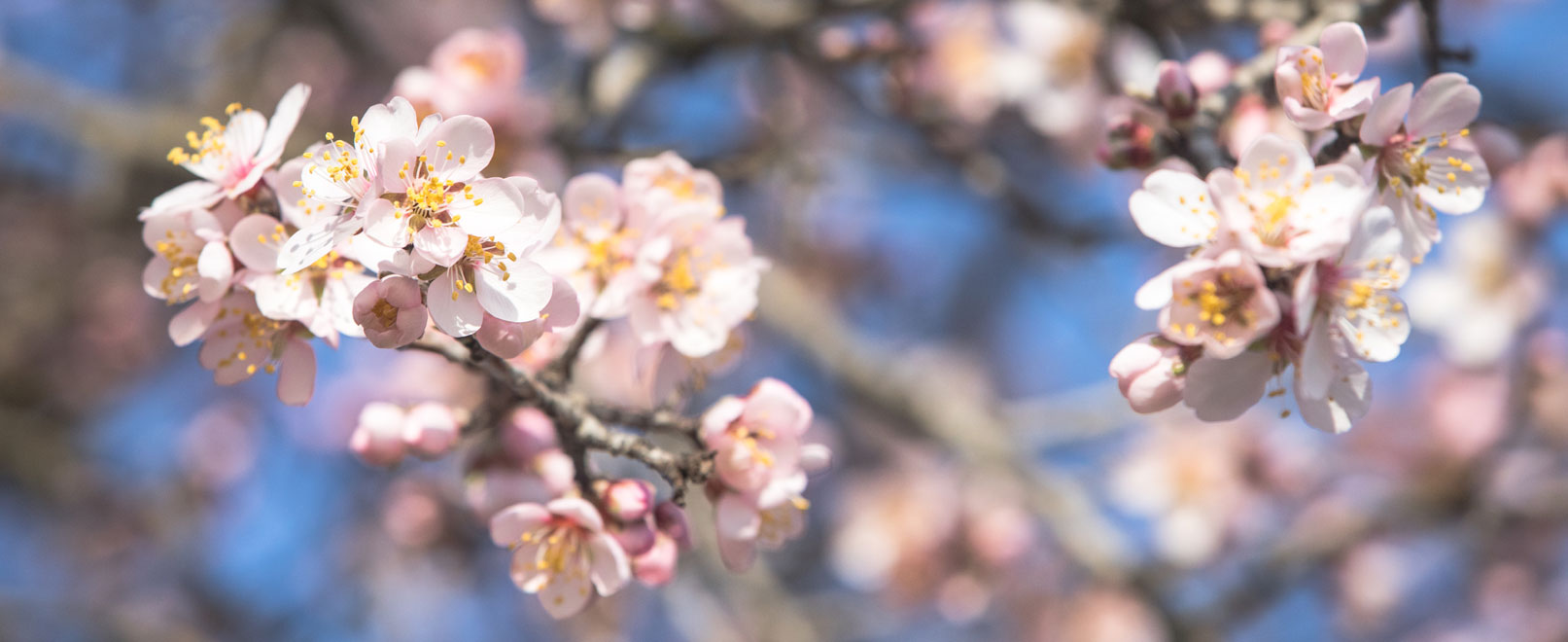
Top spots for photographing the almond trees
We look out for them each year. What? The almond trees in blossom of course! Some come out towards mid-February, others in March, according to their variety, their exposition and the land. Whether they are grown on wonderful expanses or are lonely sentries in the middle of a field, at the end of a path, their blossoms (which come out before the leaves) announce the end of winter, that the days are getting longer, Mother Nature is waking up and regained optimism at the perspective of walks among flowers. We’ll take you to our favourite spots, from the most well-known to more the private, to spend a moment admiring the delicate blossom 😊
IN THE LUBERON, IN APT
A mill, a conservatory orchard, the history of almonds in the Luberon
First of all, a mill, which has lost its blades over time. It seems carefully placed on its promontory from which the Mourre Nègre can be seen on one side, and Mont Ventoux on the other. Following the season, you can push open the door to explore a geological exhibition.
Then, in front of it, almond trees. More than a hundred trees represent 40 varieties of almond trees, along which you can wander, listening to the birds sing or the “buzzzzzz” of the insects that come to gather pollen.
This conservatory orchard, at the heart of the Luberon RNP, is a precious tool for preserving heritage and ecological diversity. It is also the opportunity for any visitor to discover that the almond tree (and the almond) under a generic name, is in fact an extraordinary garden, that Marie, an almond blossom fan from the region, has wonderfully preserved forever (FR).
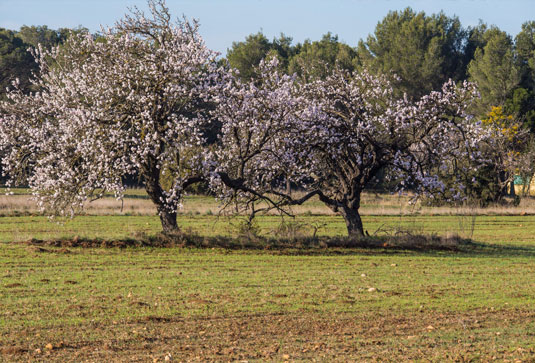
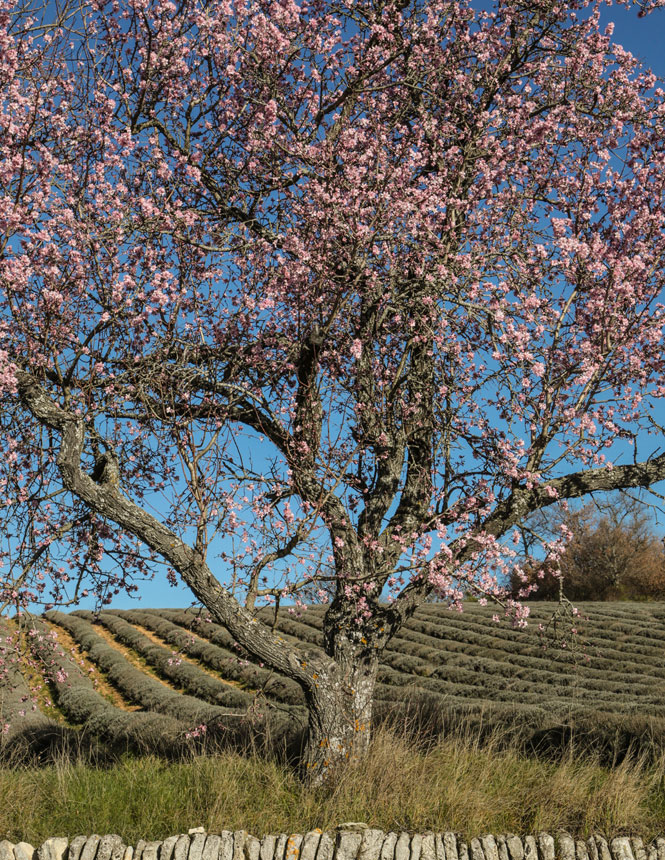
STILL IN THE LUBERON
A little further to the south
At Cucuron, at the edge of the D135 between Ansouis and Lourmarin, a very pretty field of almond trees is laid out with the Luberon hills as a backdrop. A not-to-be-missed spot!
Take photos of it while staying outside the field of course to avoid harming the planting!
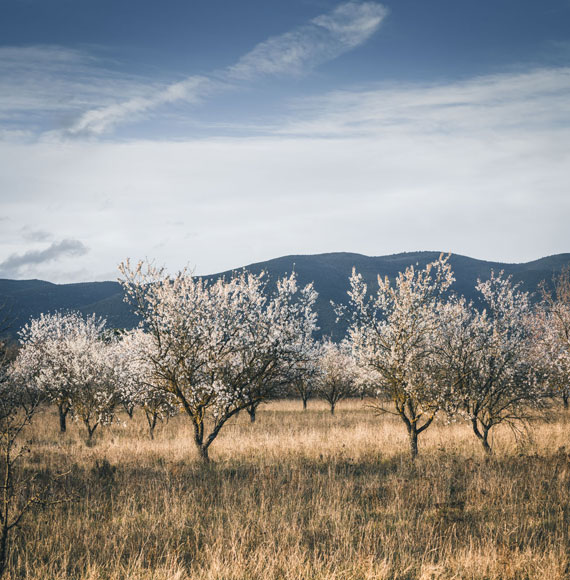
AT THE FOOT OF MONT VENTOUX, AT SAINT-DIDIER
The Silvain family’s almond trees
Here, the almond tree is king, it is pampered so it produces the most beautiful almonds to make the delicious nougats that the Silvain family is known for, having been nougat makers for more than 30 years.
If the shop gives you the opportunity to taste the almond in all its forms, you can discover the almond tree adventure in a premium tour: the almond tree from the tree to nougat, during which you will learn all about this tree which symbolises Provence (along with the olive tree) before tasting the almond treats when you get back to the shop.
For spring 2022, the tours should take place on 12 or 19 March, depending on the weather conditions, which influence when the trees blossom of course. Note that the tours are also organised in the summer, to follow the almond tree through the seasons.
To see one of their fields in blossom, Claire Silvain suggests the one that is opposite the Chèvrerie des Fontaines, at Pernes-les-Fontaines. Mind you don’t go into the field though, to avoid damaging the trees, which are fragile.

Highlight
The selection for discovering the unmissable ones in the nougat collection (with almonds of course!) Silvain: the dreamer, the Gargantua, the delicate, unpredictable one. And the plain almond (or savoury), perfect with an aperitif, as a snack. DELIGHTS that have been tried and given a big thumbs up!
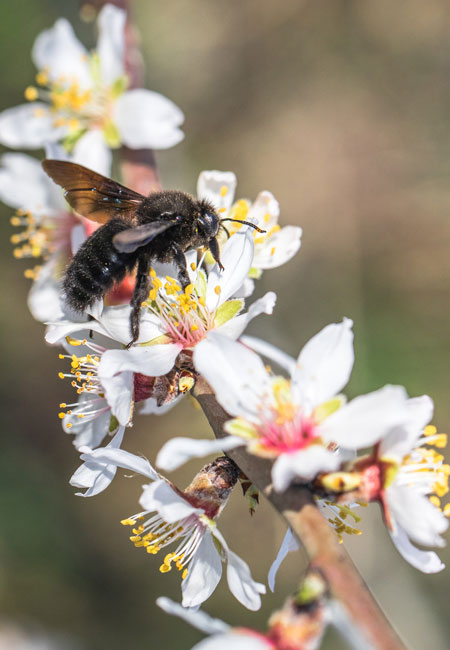
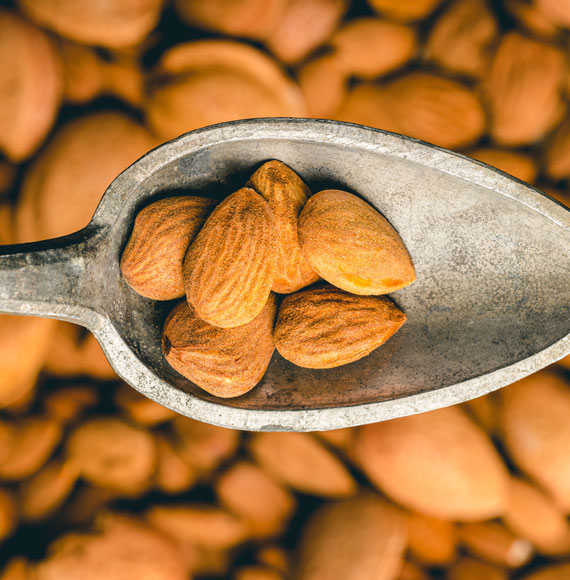
Almonds for an aperitif 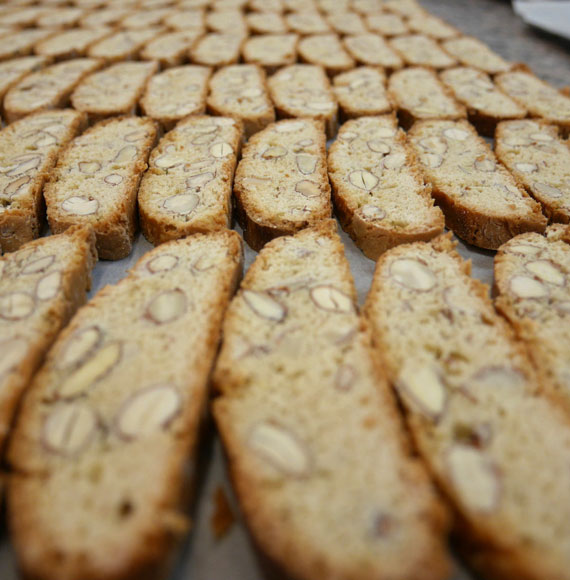
Almond Croquant biscuits 
Almonds for a snack 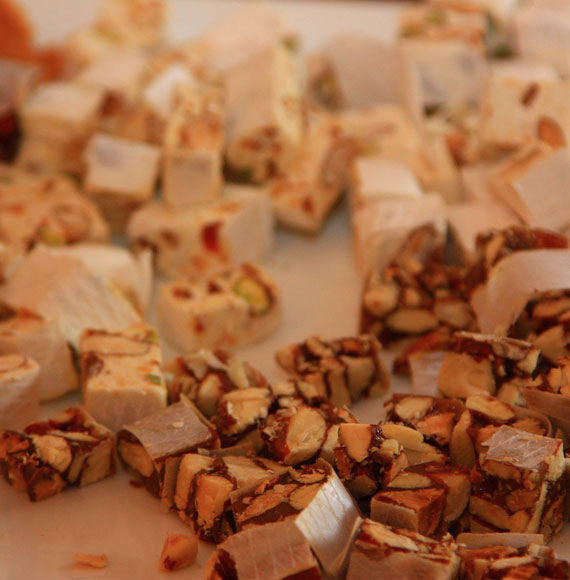
Nougat
A FEW KM FROM ORANGE, AT JONQUIÈRES
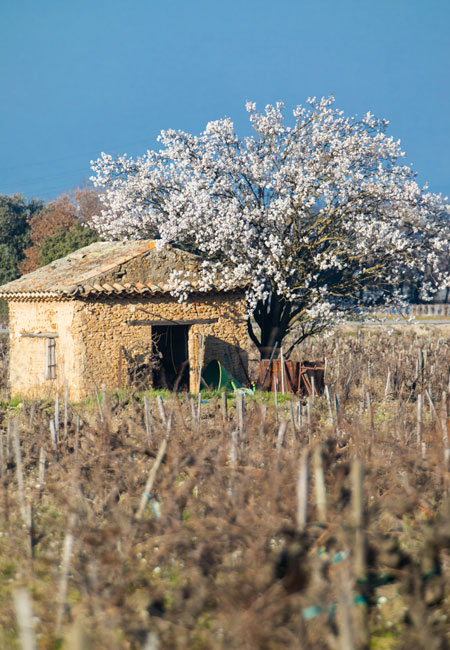

Did you know?
We have enjoyed eating almonds for more than 780,000 years. Almond trees were first grown in China, then in Greece, then spread out and arrived in Provence, where they have become a familiar sight in the countryside and cooking.
The almond trees of the Roman family
There are more than 700 almond trees here with two varieties: Lauranne and Ferragnès. A sea of blossom that enchants the eyes!
They are grown organically and provide nice almonds that can be tried and bought on the estate, either with the shell on, or shelled (when you’re a foodie and want to try them as soon as you’ve bought them 😉)
AND ALSO…
There are also wild almond trees, from old almond tree orchards that have been left for nature to take back when you travel across the roads and paths criss-crossing Luberon, around the Ventoux, in the Enclave des Papes or even on the edges of towns and villages. They can be spotted from far away, with their blossom-laden branches, like arms lifted towards the sun. Here, they keep a borie company, there a chapel, a hut, a lavender field (which is still slumbering 😉)…
Our favourite little places: the almond tree at the foot of the ruins of the Châteauneuf-du-Pape castle, the almond trees around the Notre-Dame-des-Neiges chapel in Blauvac, those found on the foothills of the Ventoux, at the edges of the lavender fields in Luberon or the Pays de Sault…
